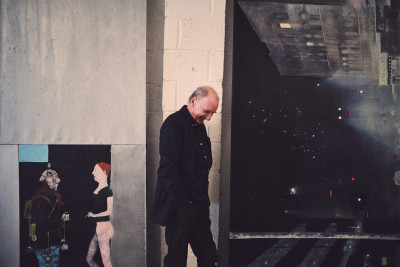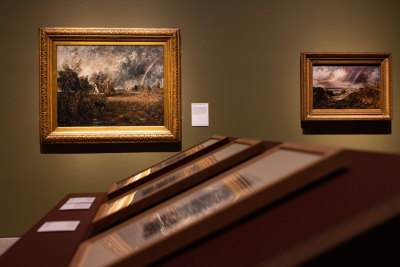How to read it: Thomas Banks RA’s The Falling Titan
How to read it: Thomas Banks RA’s The Falling Titan
By RA Collections team
Published 13 November 2017
The Falling Titan depicts the doomed attempt of an earthbound giant to reach Olympus and overthrow Zeus by climbing up a pile of great boulders, only to be crushed by those very stones.
-
What’s the story?
In Greek mythology, the Titans were six gods who ruled the universe before they were supplanted by the Olympians. The Titans piled mountains on top of each other to reach up to Heaven in an attempt to overthrow Zeus and reclaim their position, but were seen by Zeus and thrown back to earth.
This dynamic sculpture represents the real anguish and pain of the Titan as he is flung down the mountain, a huge mass of rocks tumbling after him. The immense size of the Titan is made clear by the inclusion of a tiny satyr and two goats on the base of the sculpture, fleeing in fear.
What inspired the sculpture?
Banks’ daughter Lavinia Forster recalled that when they were studying together in Rome, Banks and Henry Fuseli RA would make sketches of figures from five different viewpoints. Forster believed that one of these drawings may have sparked the idea for The Falling Titan, thanks to the interesting challenge the scene poses in terms of creating perspective. The relatively small head of the giant suggests that the sculpture is supposed to be viewed from below, while the effect of the falling giant is increased by the dramatic foreshortening of the figure. The Titans myth gave Banks the ideal subject for a sculpture that would make full use of his work studying perspective, so it’s likely that the scene was chosen primarily for its technical complexity.
-

Thomas Banks RA, The Falling Titan, 1786.
Marble. 85 x 90 x 58 cm. The Royal Academy of Arts, London.
-
What is it made from?
The sculpture is carved from a single block of marble from Carrara, Tuscany, favoured by sculptors for its pure, white appearance. Banks was an expert carver, having started his career as a stone mason. The chisel marks remain evident in the boulders to suggest naturally formed stones, creating a contrast with the smooth, lifelike skin of the giant. In preparation for this piece, Banks made multiple sketches and a clay model, a plaster cast of which is in the Royal Academy’s Collection.
-
This statue approaches perfection: it is one of those works of art, that in a small compass, and with simplicity of parts, may be called sublime.
John Britton, 1812
-
-

What’s the significance of the work?
Banks studied at the Royal Academy Schools and received the travelling Scholarship to Rome in 1770. When he was elected to the Royal Academy in 1785, he gave this ambitious work, probably in recognition of the support he received as a student.
The sculpture clearly remained significant to the artist as he produced an etching of the subject, which was published around 1795. Banks may have produced the print for self-promotion, but it also allowed him to add a dramatic twist. The satyr and goats are no longer cowering beneath the shadow of the giant. Set free from the marble, they’re now seen running and leaping down the hill.
-





